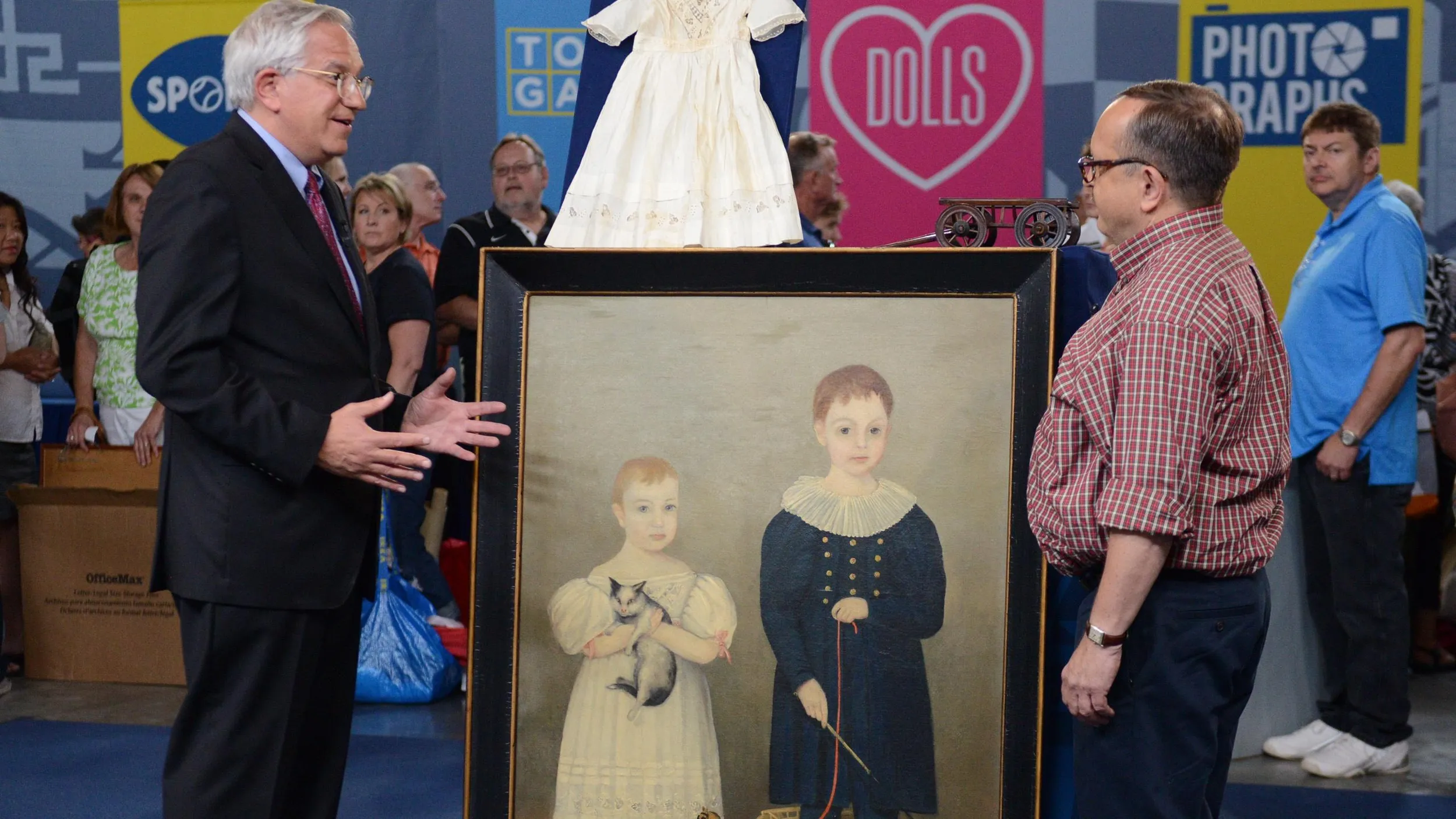GUEST: I went to graduate school at the University of Akron back in the late '70s and befriended some staff and administrative people, and one of them was a guy by the name of Ian, who owned this – this piece. And we always had fun with it and played around it. He retired, moved to Florida, he passed away and it passed then to his sister, and then it came back to some mutual friends in Akron, and about ten years ago, it came to me.
APPRAISER: And so as we know, and we have the book right here, it's by Harry Bertoia. He was an Italian-American sculptor. Moved here in 1915 and moved to Detroit and studied at the Cranbrook Institute. Did jewelry design to begin with, and then met many people, including Charles and Ray Eames, the furniture designers. He subsequently went to work for them, and in the '50s helped design a couple of very successful lines of furniture for them, so much so that he received a lump sum of money and went and pursued another passion of his, which was sculpture. Ultimately, in his lifetime, he made about 50 public works sculptures, and many of them are what are called sonambient sculptures, and this is one of these sonambient sculptures right here. Bertoia moved to Berks County in Pennsylvania, and his soundwave sculptures, he really manufactured them mostly in the 1960s. The book that you've brought in with it, what's really wonderful about this is it's actually inscribed to your friend Ian and signed by Harry, which is a wonderful thing. Bertoia's works aren't signed, and there are some fakes out there, so this really reinforces that we know this is by Bertoia. It is made of bronze, and then there are vertical rods of bronze that are soldered very closely together. Earlier on, when we were talking, it was actually vibrating just ever so slightly. What is very interesting is that in the 1990s, one of Bertoia's children-- he died in 1978-- discovered a huge cache of vinyl records that Bertoia had made, and they were recordings of his sonambient sculptures.
GUEST: Wow, I didn't know that.
APPRAISER: I think there were 11 versions in the end, but it was a huge cache of these vinyl presses, and they sold and they went into the market. I've never heard one. I'm sure they're quite interesting to hear. These works come up not infrequently at auction. Occasionally, his public works pieces come up for auction as well, but these smaller pieces, they come up, they're highly sought after and highly desirable. Have you ever considered what it might be worth?
GUEST: I've seen what some of the non-sound pieces are worth, and I actually thought-- and I know what the big ones belonging to institutions are worth-- I actually thought this just might be a study for one of the… larger works.
APPRAISER: We've done some research, and I wasn't able to find that this reflected a study for any larger ones. That's not to say that there's not one out there. If this were to come up for auction, I recommend keeping the book with the inscription with it. While I don't believe it would increase the auction estimate, it can only enhance the ultimate sales price of the piece. If we were to see this come up for auction today, we're very, very confident that an auction estimate would be $20,000 to $25,000.
GUEST: Wow, nice. Thank you.
APPRAISER: His public works pieces bring considerably more. In 2014 -- October of 2014 -- one of his public works pieces sold for $440,000. It's a real treat, and thank you for bringing it into Roadshow.
GUEST: Thank you. Appreciate it.



